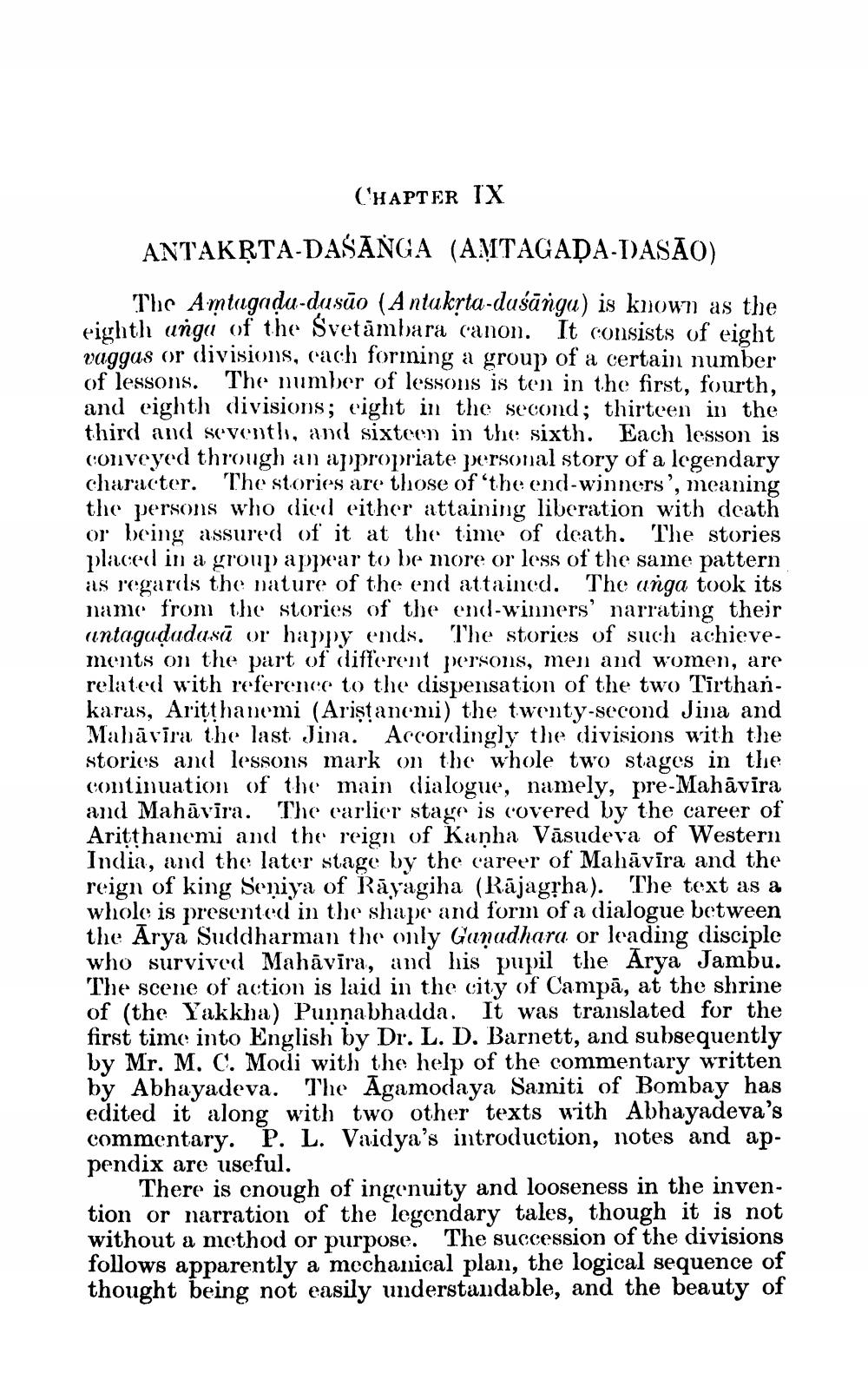________________
CHAPTER IX
ANTAKRTA-DASANGA (AMTAGADA-TASÃO)
The Amtagadu-dusāo (Antakrta-duśānga) is known as the eighth unga of the Svetāmbara (anon. It consists of eight vaggas or divisions, cach forining a group of a certain number of lessons. The number of lessons is ten in the first, fourth, and eighth divisions; cight in the second; thirteen in the third and seventh, and sixteen in the sixth. Each lesson is conveyed through an appropriate personal story of a legendary character. The stories are those of the end-winners', meaning the persons who died either attaining liberation with death or being assured of it at the time of death. The stories placed in a group appear to be more or less of the same pattern as regards the nature of the end attained. The anga took its name from the stories of the end-winners' narrating their antagudadasū or happy ends. The stories of such achieve. ments oli the part of different persons, men and women, are related with reference to the dispensation of the two Tirthankaras, Aritthanemi (Aristanemi) the twenty-second Jina and Mahāvīra the last Jina. Accordingly the divisions with the stories and lessons mark on the whole two stages in the continuation of the main dialogue, namely, pre-Mahāvīra and Mahāvira. The earlier stave is covered by the career of Aritthanemi and the reign of Kanha Vāsudeva of Western India, and the later stage by the career of Mahāvīra and the reign of king Seniya of Rāyagiha (Rājagļha). The text as a whole is presented in the shape and form of a dialogue between the Arya Suddharman the only Ganadhara or leading disciple who survived Mahāvīra, and his pupil the Arya Jambu. The scene of action is laid in the city of Campā, at the shrine of (the Yakkha) Punnabhadda. It was translated for the first time into English by Dr. L. D. Barnett, and subsequently by Mr. M. C. Modi with the help of the commentary writt by Abhayadeva. The Āgamodaya Samiti of Bombay has edited it along with two other texts with Abhayadeva's commentary. P. L. Vaidya's introduction, notes and appendix are useful.
There is enough of ingenuity and looseness in the invention or narration of the legendary tales, though it is not without a method or purpose. The succession of the divisions follows apparently a mechanical plan, the logical sequence of thought being not easily understandable, and the beauty of




